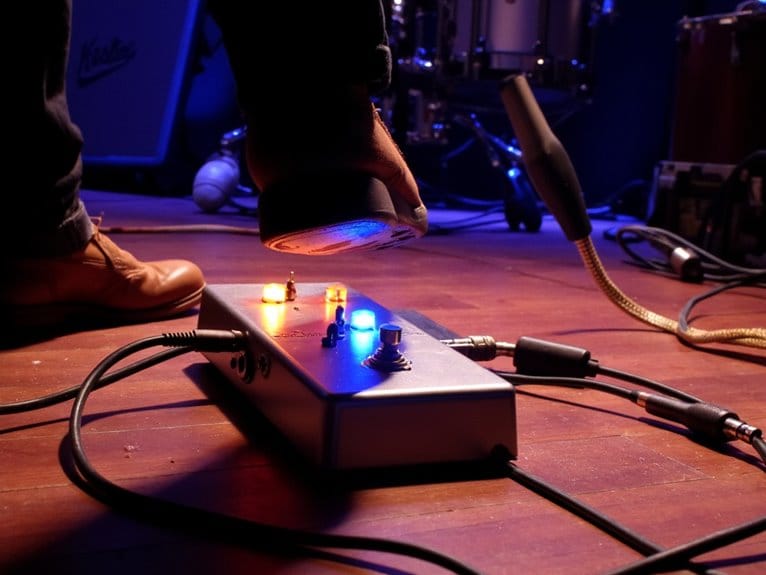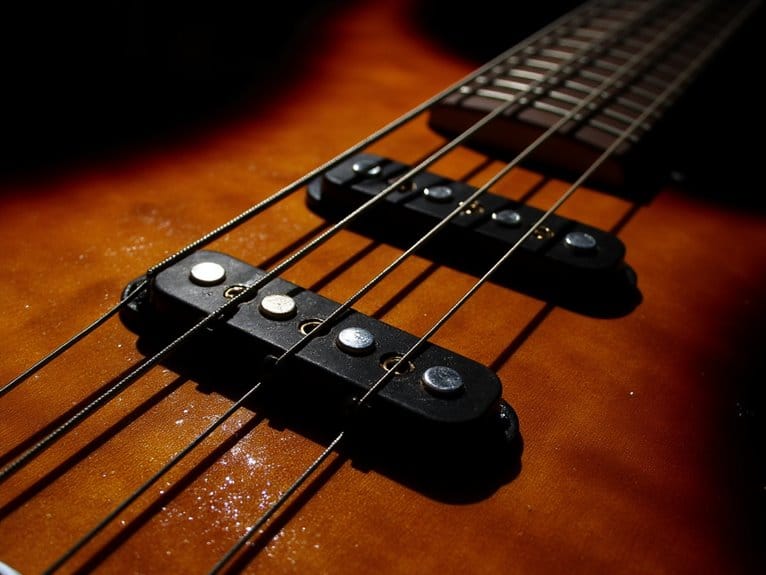Preventing Audio Interface Latency: Tips and Tricks
Hey there! Tired of dealing with audio interface latency? Need some helpful tips to cut down on those frustrating delays and make your audio recording experience smoother than ever? Well, you've come to the right place! This article is packed with valuable advice to help you prevent audio interface latency once and for all. So, let's dive in and discover how you can choose a low latency audio interface, optimize your buffer size, update your drivers, and more. Say goodbye to those annoying delays and say hello to a seamless recording process. Get ready to take your audio production to the next level!
We are supported by our audience. When you purchase through links on our site, we may earn an affiliate commission, at no extra cost for you. Learn more.
Now, let's get down to business. First things first, choosing a low latency audio interface is key. Think of it as picking the perfect car for a road trip. You want something fast and reliable, right? Well, the same goes for your audio interface. Look for one that's specifically designed to handle low latency, so you can record and monitor your audio in real-time without any noticeable delays.
Next up, let's talk about optimizing your buffer size. Think of your buffer as a cup that holds your audio data. The larger the cup (buffer), the more data it can hold, but the longer it takes to process. On the other hand, a smaller cup (buffer) processes data faster, but it may not be able to handle larger amounts of data. So, finding the right balance is crucial. Experiment with different buffer sizes to find the sweet spot that minimizes latency without compromising performance.
Now, onto updating your drivers. Just like updating your phone's operating system, keeping your audio interface drivers up to date ensures you're getting the latest performance improvements and bug fixes. It's like giving your audio interface a little tune-up, making sure it's running smoothly and efficiently.
Oh, and don't forget about your computer's performance. Just like a well-oiled machine, a clean and optimized computer can work wonders for reducing audio interface latency. Close unnecessary programs, clear out any junk files, and make sure your system is running smoothly. It's like decluttering your workspace, creating a focused and distraction-free environment for your audio production.
Lastly, let's talk about cables. Yep, those seemingly insignificant wires can actually have an impact on your audio interface's performance. Think of them as the veins that carry the lifeblood of your audio signal. Using high-quality cables with proper shielding can help prevent any signal loss or interference, ensuring a clean and crisp audio recording.
So, there you have it! By following these tips and tricks, you'll be well on your way to minimizing audio interface latency and elevating your audio recording experience. No more frustrating delays or missed opportunities. It's time to unleash your creativity and take your audio production to new heights. Happy recording!
Choose a Low Latency Audio Interface
When selecting an audio interface with low latency, prioritize choosing a device that minimizes audio delay. Low latency is crucial for audio professionals and musicians who require real-time monitoring without any noticeable delay. A low latency audio interface ensures that the input signal is converted and transmitted to your computer quickly, allowing you to hear the playback in real-time without any noticeable lag. To achieve this, look for an interface that offers high-speed data transfer rates, such as USB 3.0 or Thunderbolt connectivity. Additionally, consider the interface's buffer size, as a smaller buffer size can help minimize latency. Finally, check if the audio interface has dedicated drivers and software optimizations that further reduce latency. By choosing a low latency audio interface, you can enhance your workflow and achieve a more immersive and responsive audio experience.
Optimize Your Buffer Size
To optimize your buffer size, adjust the settings to minimize audio latency and ensure real-time monitoring without noticeable delay. The buffer size refers to the amount of audio data that your computer processes at one time. A smaller buffer size reduces latency but requires more processing power, while a larger buffer size increases latency but requires less processing power. To find the optimal balance, start by setting your buffer size to the lowest possible value and test it with your audio software. If you experience audio dropouts or glitches, gradually increase the buffer size until the issues disappear. Keep in mind that different applications may require different buffer sizes, so it's important to experiment and find the best settings for your specific setup.
Update Your Audio Interface Drivers
To ensure optimal performance and minimize audio latency, you should regularly update your audio interface drivers. Audio interface drivers are software that allow your computer to communicate with your audio interface hardware. Manufacturers often release driver updates to improve compatibility, fix bugs, and enhance performance. Outdated drivers can lead to increased latency and other issues, so it's important to keep them up to date. To update your audio interface drivers, visit the manufacturer's website and locate the drivers section. Download the latest version of the driver that is compatible with your operating system. Before installing the new driver, make sure to uninstall the previous version. Once the new driver is installed, restart your computer to ensure the changes take effect. By keeping your audio interface drivers updated, you can ensure a smooth and efficient audio production workflow.
Use a Dedicated Audio Processing Computer
To achieve even lower audio latency and optimize performance, consider using a dedicated audio processing computer for your production needs. A dedicated audio processing computer is specifically designed to handle the demands of audio production, providing a high level of performance and reducing latency to a minimum. These computers are equipped with powerful processors, ample RAM, and high-speed storage to ensure smooth and efficient audio processing. By dedicating a computer solely to audio tasks, you can eliminate the potential for background processes or software conflicts that could cause latency issues. Additionally, a dedicated audio processing computer allows for customization and optimization of settings, ensuring the best possible performance for your specific audio production requirements. Invest in a dedicated audio processing computer to unlock the full potential of your audio interface and achieve optimal results.
Minimize Background Processes and Plugins
Minimize the number of background processes and plugins running simultaneously to reduce audio interface latency. When your computer is running multiple background processes and plugins, it can cause a delay in audio processing, resulting in latency issues. To overcome this, close any unnecessary applications and disable any unused plugins. This will free up system resources, allowing your audio interface to operate more efficiently. Additionally, consider using lightweight plugins that have lower CPU usage to further minimize latency. By minimizing background processes and plugins, you can ensure that your audio interface operates with minimal latency, providing a seamless and responsive audio processing experience. Stay focused on optimizing your system's performance to achieve the best results in your audio production workflow.
Consider Using Direct Monitoring
When using direct monitoring, you can further reduce audio interface latency by bypassing the computer's processing and monitoring the audio signal directly. Direct monitoring allows you to hear the audio input directly, without it having to go through the computer for processing. This is especially useful when recording, as it eliminates the latency caused by the computer's processing time. By monitoring the audio signal directly, you can ensure real-time monitoring and make accurate adjustments as needed. This method is commonly used in professional audio setups, where low latency is crucial for a seamless recording experience. To enable direct monitoring, you need an audio interface that supports this feature. Check your interface's user manual or software settings to see if direct monitoring is available and how to enable it.
Conclusion
In conclusion, by selecting a low latency audio interface, optimizing buffer size, updating drivers, using a dedicated audio processing computer, minimizing background processes and plugins, and considering direct monitoring, you can effectively prevent audio interface latency. These tips and tricks will ensure a smooth and precise audio recording and playback experience, allowing you to focus on creating high-quality sound without any noticeable delays.






